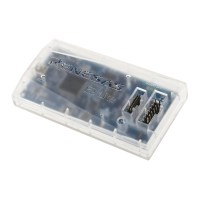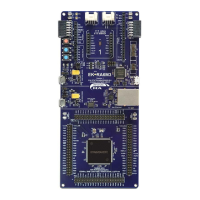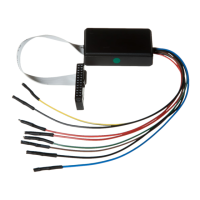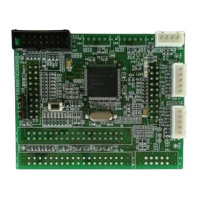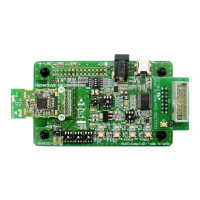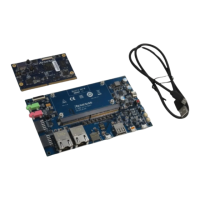E1/E20/E2/E2 Lite Additional Document 1. Overview
R20UT2937EJ0301 Rev.3.01 Page 12 of 45
Jul 1, 2020
Table 1-3 Assignments of the External Trigger Input and Output Pins for the E2 Expansion Interface
Pin Nos. 1 to 8 are not used.
These pins must be left open-circuit.
2
4
6
8
External trigger output (ch. 0)
10 Output External trigger output (ch. 1)
External trigger input (ch. 0)
12 Input External trigger input (ch. 1)
14 Output A pin for output of the power-supply voltage for the E2 expansion interface
(1.8 V to 5.0 V)
1.5.2 Specifications of the External Trigger Inputs and Outputs
Table 1-4 Specifications of the External Trigger Inputs and Outputs
Input signal channels E2 expansion interface: 2 (ch. 0: pin 11, ch. 1: pin 12)
E2 expansion interface: 2 (ch. 0: pin 9, ch. 1: pin 10)
Voltage of the E2 expansion
interface
• When the power is supplied from the emulator:
supply voltage (1.8V to 5.0 V)
• When the power is not supplied from the emulator: VDD voltage
Conditions for detecting an
external trigger input
• Detecting edges (rising, falling, or both)
• Detecting a level (low or high)
Operation during the input of an
external trigger
• Break*
• Recording the data from measuring the current consumption while the
low or high level is being input
Condition for detecting an
external trigger output
Detecting a break or a trigger condition for measuring the current
consumption
Operation during the output of
an external trigger
• When a break is detected, a low- or high-level pulse is output (the
pulse width can be set to times in the range from 1 µsec to 65535
µsec).
• When a trigger condition for measuring the current consumption is
detected, a high-level pulse is output (the pulse width can be set to
times in the range from 1 µsec to 65535 µsec). Otherwise, a high level
is output while a condition is being satisfied.
Note: About 100 µs will be required from the detection of a condition for an external trigger input being satisfied until
the user program is stopped.
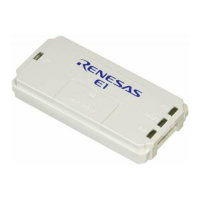
